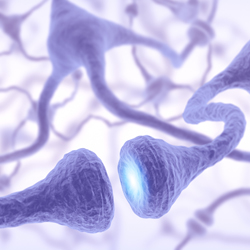New molecular toolkit to study synapses
Protein–protein interactions play a role in almost all biological functions at the cellular level. Studying and understanding these interactions is one of the major challenges of molecular biology today. The NEUROCHEMBIOTOOLS project aimed to study protein interactions in the synapses (the spaces between neurons), where protein networks determine complex phenomena like learning and memory. Researchers first developed biomimetic peptides — short pieces of protein that look identical to parts of functional proteins. They produced a number of these peptides for a protein sub-unit common to many signalling proteins (the PDZ domain). Next, they attached various functional molecules to the biomimetic ligands to investigate which proteins interacted with the PDZ domain. Once these were created, standard assays using these molecules were designed and tested. The tools were used to identify common proteins that the PDZ domain binds to. As an example, NEUROCHEMBIOTOOLS used the tools to study the regulation of gephyrin, an important neurotransmitter protein. This project has provided valuable molecular biology techniques for studying how nerves transmit information. It will have a long-term impact on neurobiology research and may even contribute to drug development for mental health problems.







